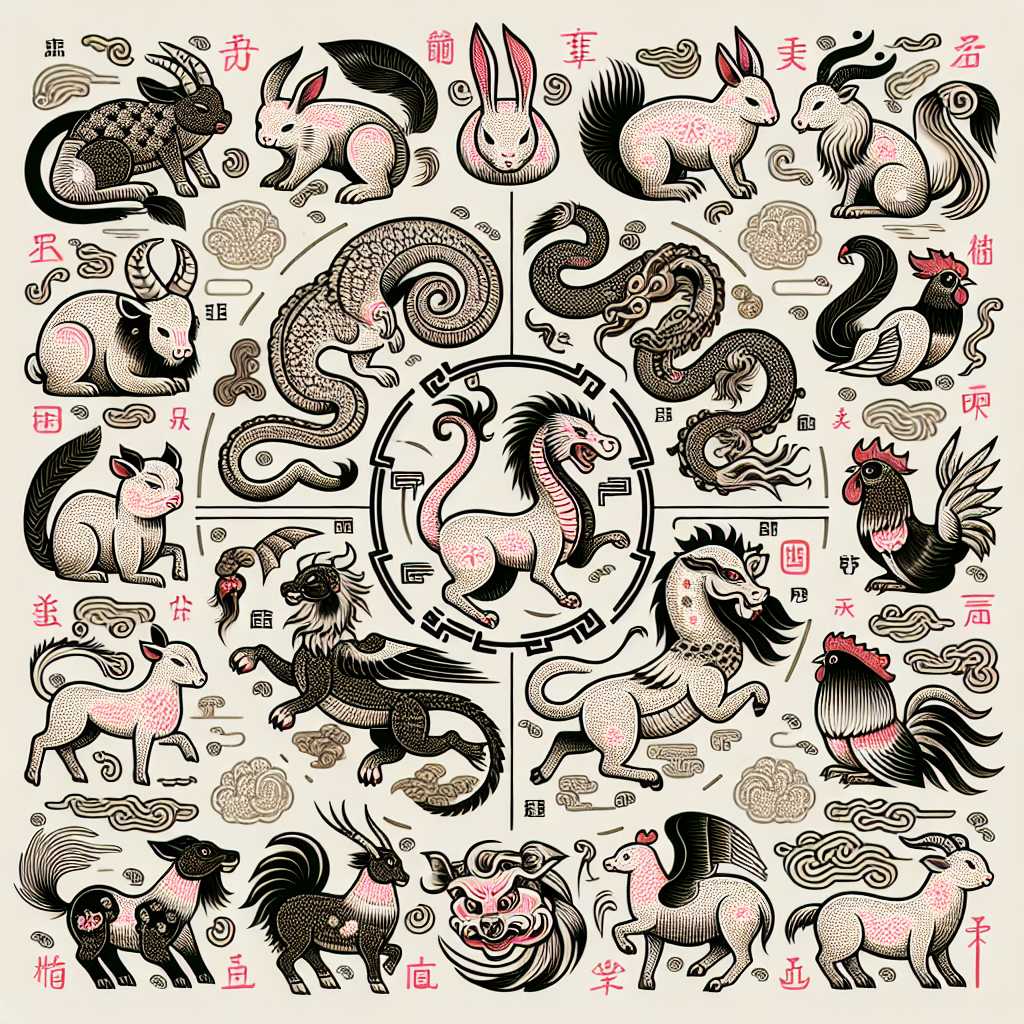The Enduring Appeal of the Chinese Zodiac System in Culture and Astrology
The Chinese zodiac, also known as Shengxiao, is an ancient system of astrology that revolves around a 12-year cycle, with each year in that cycle related to an animal sign. This system is deeply rooted in Chinese philosophy, folklore, and culture and has influence beyond mainland China as it captures the interest and imagination of people worldwide. In this comprehensive exploration of the Chinese zodiac system, we will delve into its origins, how it works, its cultural significance, and its contemporary relevance.
Origins and Historical Development of the Chinese Zodiac
The Chinese zodiac’s origins can be traced back to the Han Dynasty (206 BC – 220 AD), but some legends suggest it could originate from even earlier periods. It’s unclear precisely how and why the system was developed, but it is believed that ancient astronomers formalized existing folk traditions about animal worship into what became the Chinese lunar calendar and its accompanying zodiac.
Over time, the zodiac became intertwined with various aspects of Chinese culture and life, including festivals, agricultural cycles, and traditional events like weddings. Compatibility between zodiac signs also started playing a role in matrimonial matchmaking. Though primarily cultural, these celestial animals also carried symbolic meanings and were often thought to indicate personal traits or predict one’s fortune.
How the Chinese Zodiac System Works
The twelve animals of the Chinese zodiac are Rat, Ox, Tiger, Rabbit, Dragon, Snake, Horse, Goat (or Sheep), Monkey, Rooster, Dog, and Pig. Each year is associated with one of these animals in a repeating 12-year cycle. According to one legend, this order is attributed to a race decreed by an ancient Jade Emperor where the finishing sequence of the animals determined their placement in the zodiac cycle.
Apart from being assigned to years, each animal sign also occupies a two-hour period of the day (known as ‘hours’ in ancient China), reflecting their traditional connection to diurnal hours. In addition to yearly animals, there are Earthly Branches and Heavenly Stems—a system of ten stems and twelve branches used in tandem with the zodiac signs to provide more insight.
Cultural Significance and Practices Associated with the Chinese Zodiac
The Chinese zodiac is a fundamental part of festivals like the Chinese New Year and Lantern Festival. During these periods, mentioning one’s sign is not uncommon and various animal-themed decorations will adorn public and private spaces to bring good luck.
Furthermore, each zodiac sign has typical attributes traditionally linked with it. For instance, individuals born in the Year of the Dragon might be seen as confident and ambitious, whereas those born in the Year of the Rabbit may be viewed as compassionate and sensitive.
Understanding one’s zodiac sign is often considered helpful for making decisions about relationships, career choices, financial investments, or any endeavor where foresight might provide an advantage—even if it’s just for fun or as part of cultural tradition.
Contemporary Relevance and Global Impact
Although Western astrology dominates popular culture across much of Europe and America, interest in the Chinese zodiac is prevalent across Asia and among Asian communities worldwide. The signs have been referenced in various forms of modern media—you could find them making appearances in movies, books, fashion designs, video games, and even restaurant menus showcasing special dishes when a new Lunar Year begins.
With globalization intensifying cross-cultural exchanges, elements from different horoscopic systems become enmeshed in each other’s practices alongside growing curiosity about alternative traditions. For many non-Chinese individuals exploring their multi-faceted personal identities or seeking spiritual diversification, attending a Chinese New Year event or identifying with a Chinese zodiac sign has become part of their cultural experience.
